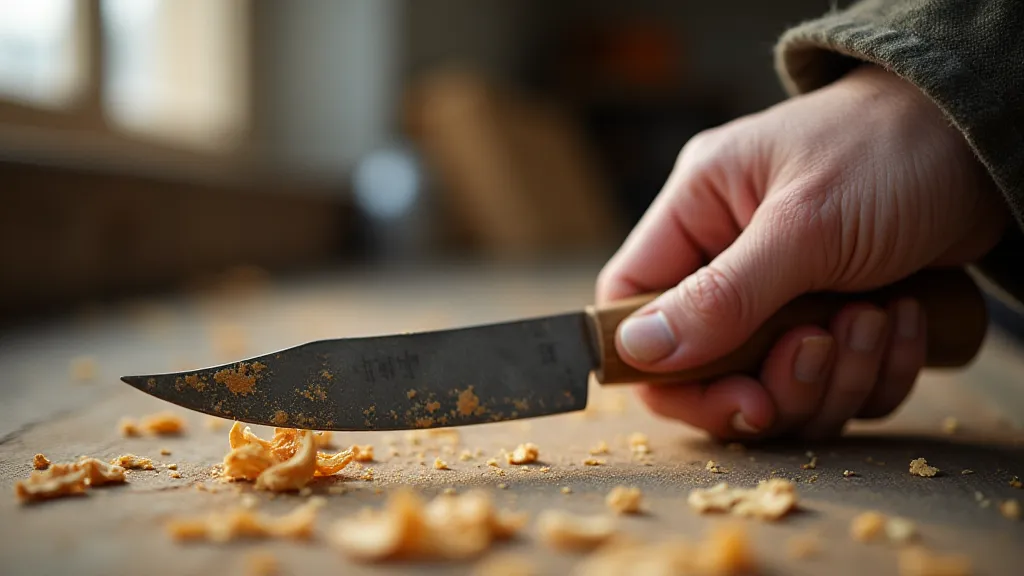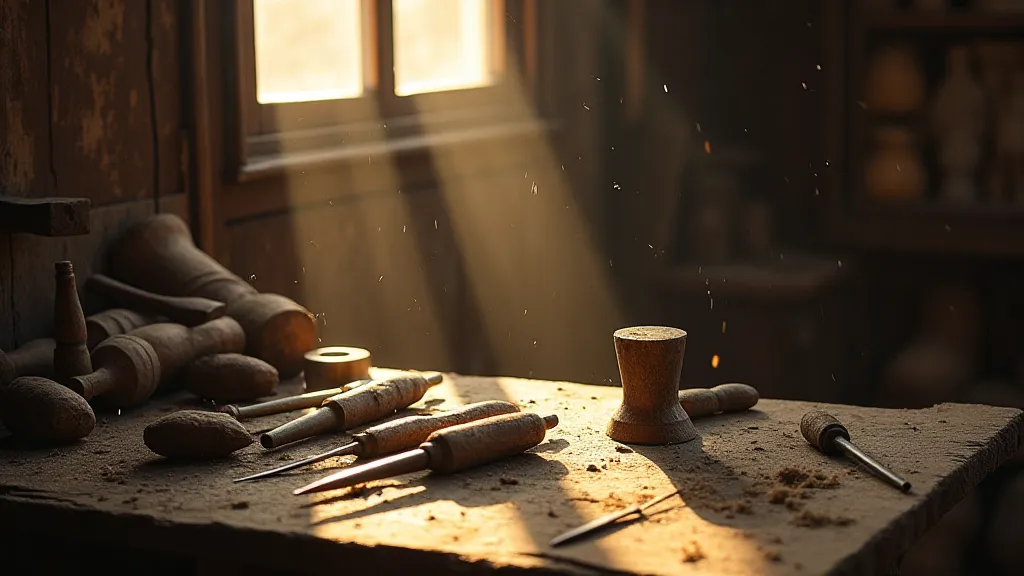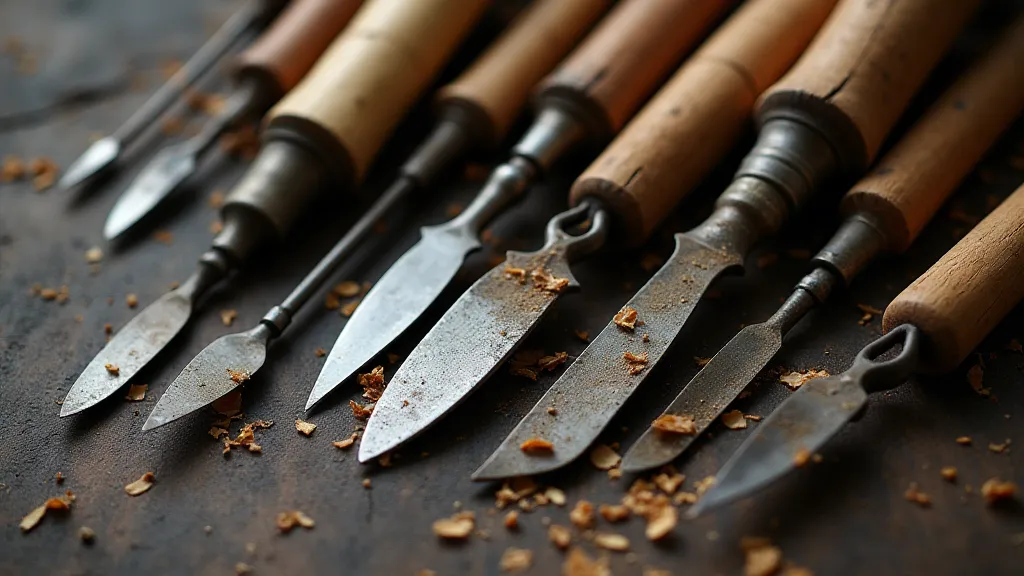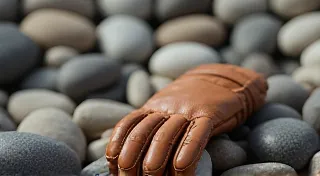Beyond the Axe: Tools and the Alchemy of Regional Woodworking
There's a certain magic in watching a block of wood transform under the practiced hand of a carver. It’s more than just removal; it’s revelation. It's witnessing a story unfold, a form emerge from the grain. But the story isn's solely about the artist. It's intrinsically linked to the tools, to the evolution of implements passed down through generations, each subtly shaping not only the wood but also the very character of regional carving styles. We often celebrate the final product – the intricate Madonna, the whimsical folk figure – but rarely pause to consider the silent partners in their creation: the chisels, gouges, knives, and rasps that define a tradition.
The Dance of Steel and Wood: A Global Tapestry
Consider, for a moment, the vastness of the world. Every valley, every mountain range, every coastal community developed its own unique relationship with the wood readily available to them and the particular artistic expression they sought to achieve. Early tools, often simple stones or shells, gradually evolved into more refined instruments as metallurgy advanced. But even with comparable technologies, regional variations persisted, born from necessity, ingenuity, and the accumulated knowledge of countless artisans. The constant interplay between the artisan and their instruments – a dance of steel and wood, if you will – created lasting impacts on the final product.
In Scandinavia, for example, the starkness of the landscape profoundly impacted carving traditions. The iconic Dala horse, a brightly painted wooden horse originating from Dalarna province, wouldn't exist without the curved knives used to meticulously shape its form. These knives, often passed down within families, were specifically adapted for carving the dense, local pine. The arc of the blade, the angle of the handle - everything was honed over centuries to suit the wood and the aesthetic.

Germanic Precision and Alpine Flourishes
Moving south, the intricate Black Forest carvings of Germany showcase a different sensibility. Here, the emphasis is on detail, precision, and a certain playful realism. The tools employed – a wider range of gouges and chisels – reflect this pursuit of detail. Masters carved intricate cuckoo clocks, religious figures, and whimsical animal figurines. The long winters likely contributed to a focus on indoor craftsmanship, allowing for a refinement of technique rarely seen in more temperate climates. This dedication to minute detail wasn't just about technical skill; it was a philosophy, a way of connecting with a heritage of craftsmanship. The impact of carving extends beyond aesthetics, influencing the very nature of artistic thought and the development of specific schools of thought—an intersection many artists explore in their practice, sometimes echoing patterns from the past.
The Alpine regions, too, developed their own distinct approaches. The Tyrolean woodcarving tradition, for instance, is famed for its lively depictions of rural life, often incorporating vibrant colors. The tools used here were often smaller, allowing for the rendering of finer details in clothing and facial expressions. The influence of religious themes, coupled with the practical need for decorative items in homes, drove the evolution of specialized carving instruments. The influence of religious themes also shaped the forms and functions of crafted objects, leading to variations that speak to a profound cultural significance.
The American Frontier: Improvised Ingenuity
Across the Atlantic, the story unfolds with a different rhythm. Early American folk art, particularly in the Appalachian region, often demonstrates a spirit of resourceful improvisation. With limited access to manufactured tools, settlers relied on what they could forge themselves or adapt from other trades. Butchering knives were repurposed for carving, and axe heads were carefully modified to create rudimentary gouges. This necessity bred a unique aesthetic – raw, expressive, and imbued with a sense of authenticity. This willingness to adapt and improvise is a recurring theme in artistic endeavor, a testament to the human spirit's capacity for innovation and the power of necessity to breed creativity. It’s a story echoed in many craft traditions, demonstrating that artistic expression doesn’t always require the finest tools—sometimes, it requires a resourceful mind and a willingness to experiment.
The Pennsylvania Dutch, with their German heritage, brought a sophisticated carving tradition to America. Their woodcarvings, often featuring biblical scenes or whimsical animals, are characterized by a remarkable attention to detail and a mastery of the undercut technique. While they benefited from imported tools, they also adapted and refined these instruments, developing a distinctive American style. The tools they used, often specialized for creating shallow reliefs, spoke to a desire to replicate the intricate woodcuts prevalent in their homeland. The dedication to producing intricate and detailed works reflects a deep-rooted artistic sensibility and showcases the importance of cultural preservation through creative expression.

The Resonance of Wear: More Than Just Tools
Handling antique carving tools is a deeply evocative experience. You feel the echoes of past hands, the countless hours of labor etched into the steel. The slight curvature of a chisel’s blade, the nicks and scratches on a drawknife – these aren’t imperfections; they are testaments to a life dedicated to craft. They whisper stories of apprenticeships, of family traditions, of the slow, deliberate process of mastering a skill. The wear and tear on these tools, often overlooked as flaws, represent a tangible link to the artisans who wielded them, adding a layer of history and meaning to each piece.
Restoration is rarely appropriate when dealing with antique carving tools. The wear and tear are integral to their character, to their story. A light cleaning to remove grime and rust is acceptable, but attempting to erase the marks of time would be a disservice to the artisan who wielded them. Collecting these tools isn’t merely about acquiring objects; it's about preserving a cultural heritage, about connecting with a lineage of skilled craftspeople. They’d likely prefer the sculptor’s soliloquy of repetitive carving patterns – the quiet meditation of creation – be respected and preserved.
Beyond Function: The Tools as Influencers
It’s fascinating to consider how the tools themselves influenced the carving styles that emerged. A region with a prevalence of drawknives, for example, might see a dominance of sweeping curves and rounded forms. A lack of access to fine-toothed gouges might encourage a simpler, more stylized approach. The tools aren’t just implements; they are active participants in the creative process, subtly guiding the aesthetic trajectory of a carving tradition. This symbiotic relationship between the tool and the technique is a recurring theme in various artistic practices across cultures.
Think about the Japanese tradition of Netsuke carving. The small size of the ivory or wood carvings demanded incredibly precise tools – tiny knives and chisels that have been passed down through generations. The resulting pieces, often depicting animals, mythical creatures, or scenes from daily life, are miniature masterpieces of craftsmanship, a direct reflection of the tools used to create them. The precision and delicacy inherent in these carvings highlight the profound impact of specialized tools on artistic expression, demonstrating how limitations can often inspire innovation.

Echoes in Other Traditions
The impact of carving techniques isn’t limited to wood. The same principles of shape, texture, and form apply across many art forms, often resulting in unique intersections of tradition and innovation. The meticulous attention to detail found in wood carving can also be found in pottery, where the shaping and molding of clay echoes the precise removal of material in wood carving. Examining these parallels reveals a deeper understanding of the shared language of artistic creation, fostering connections between seemingly disparate cultures.
Preserving the Legacy
The story of regional woodworking styles is inextricably linked to the tools that shaped them. By appreciating the ingenuity and skill that went into crafting these implements, we gain a deeper understanding of the art form itself. Let us remember that these tools aren’t just objects; they are cultural artifacts, tangible links to a past of skilled craftsmanship and enduring artistic expression. The careful use, preservation, and occasional restoration of these tools becomes a vital act of cultural stewardship – a way to ensure that the stories they embody continue to resonate for generations to come. And sometimes, appreciating the artistry also means recognizing the broader cultural context and reverberations—reverberations of the forest and the people who shaped it.





